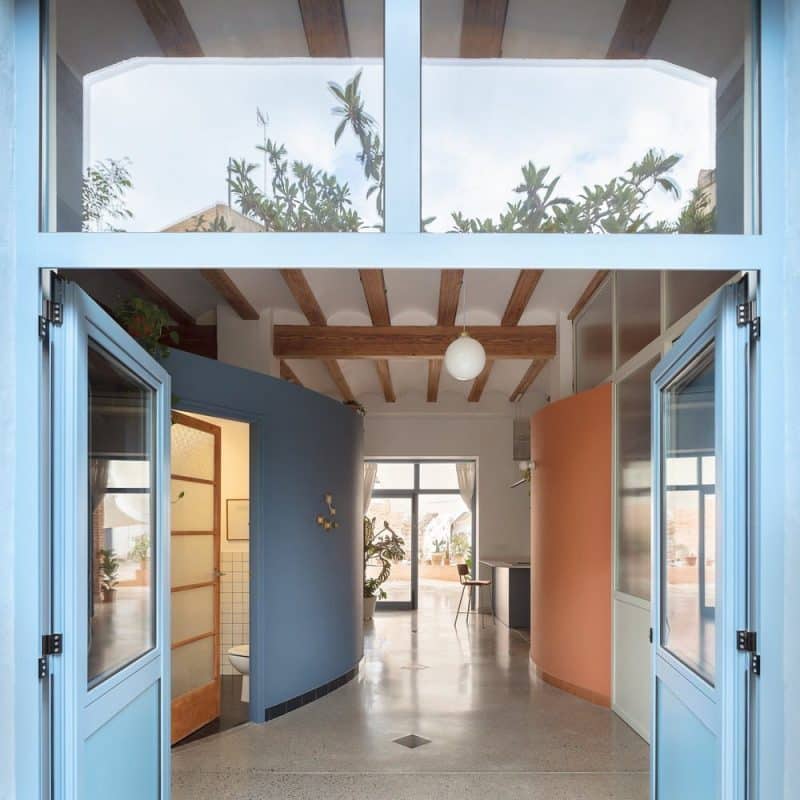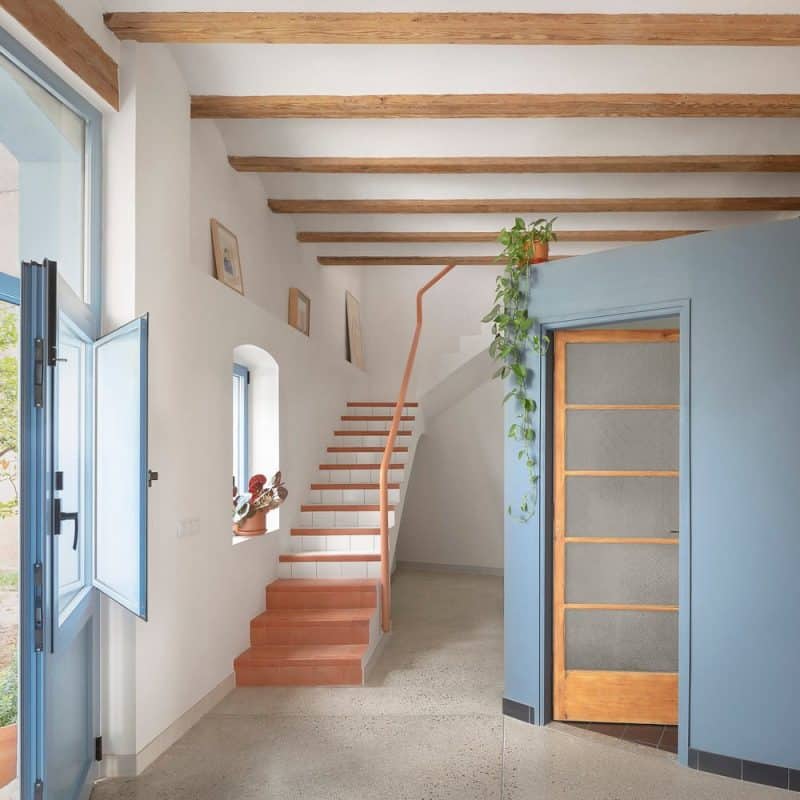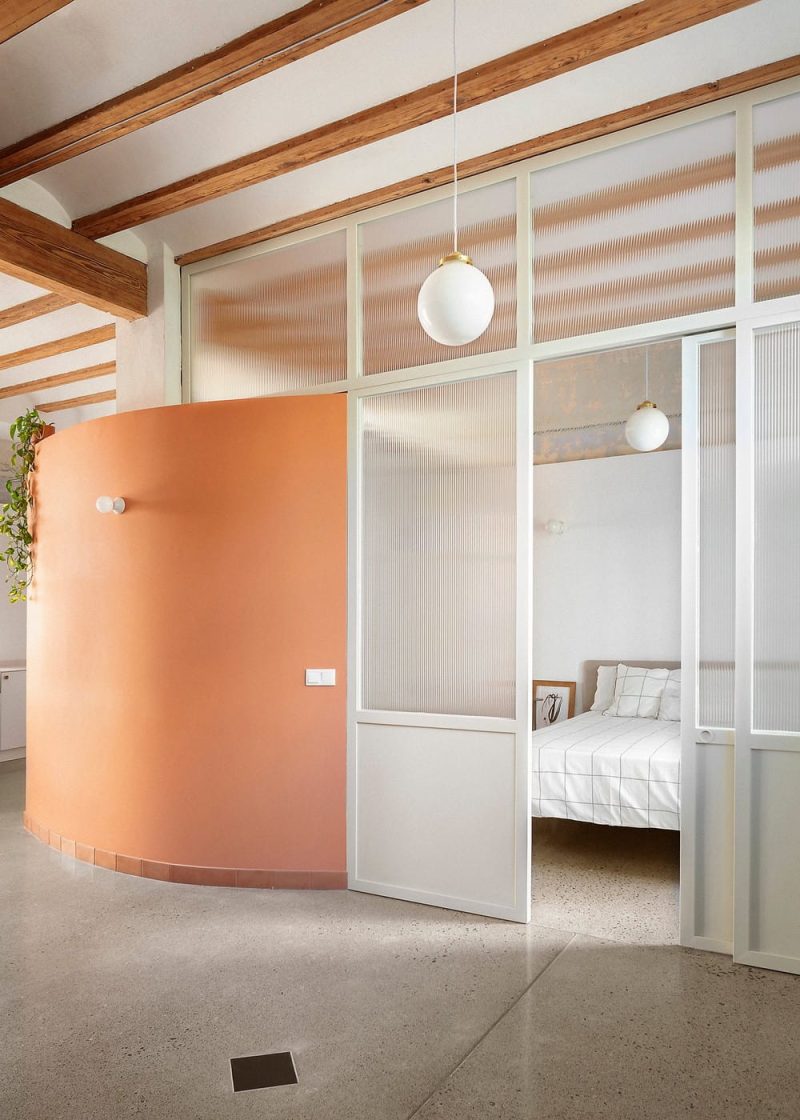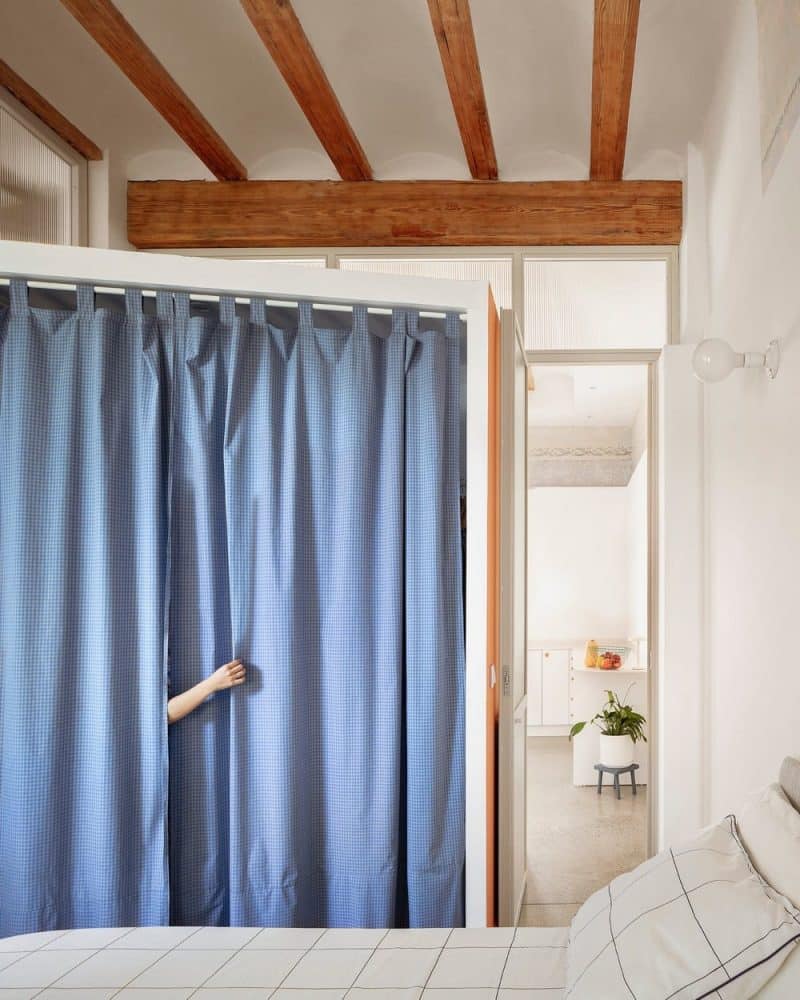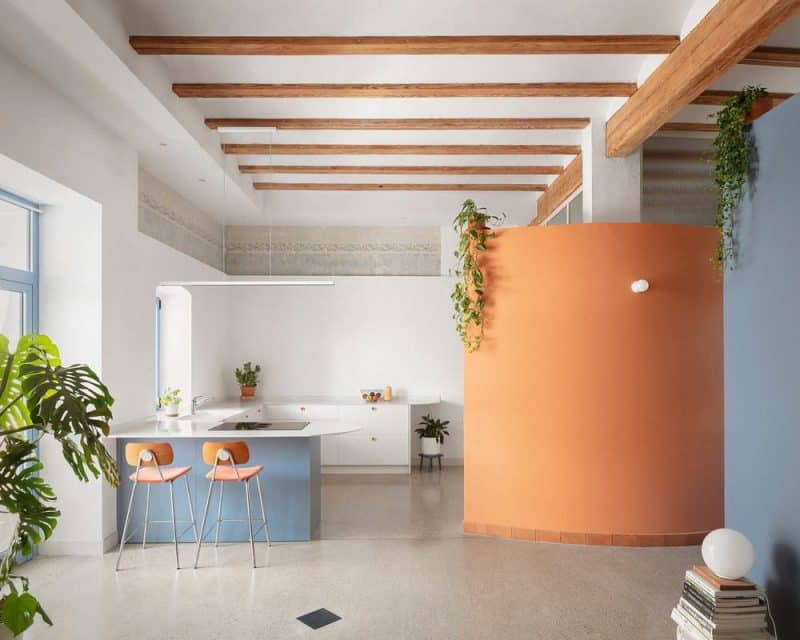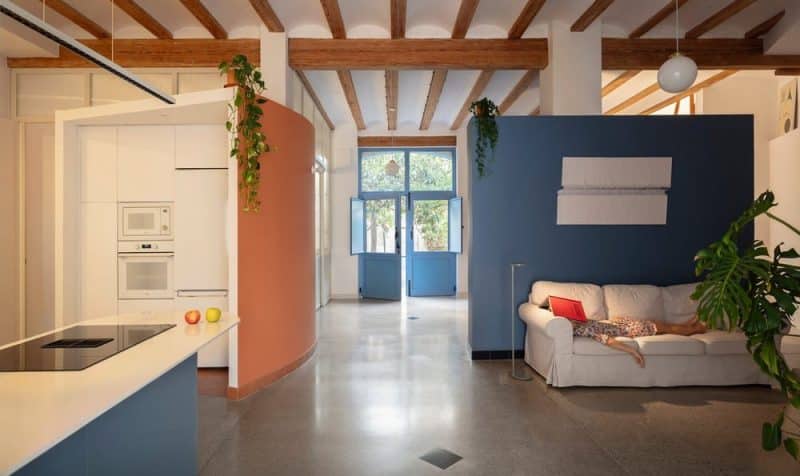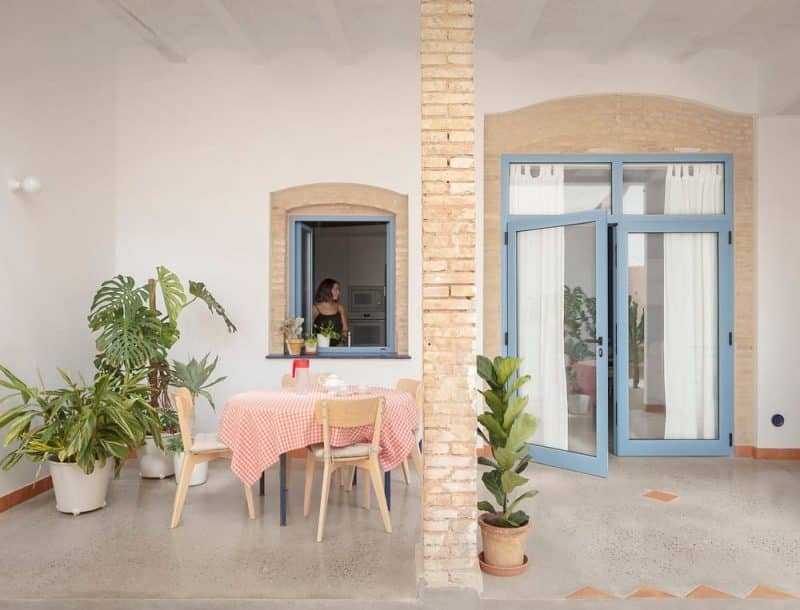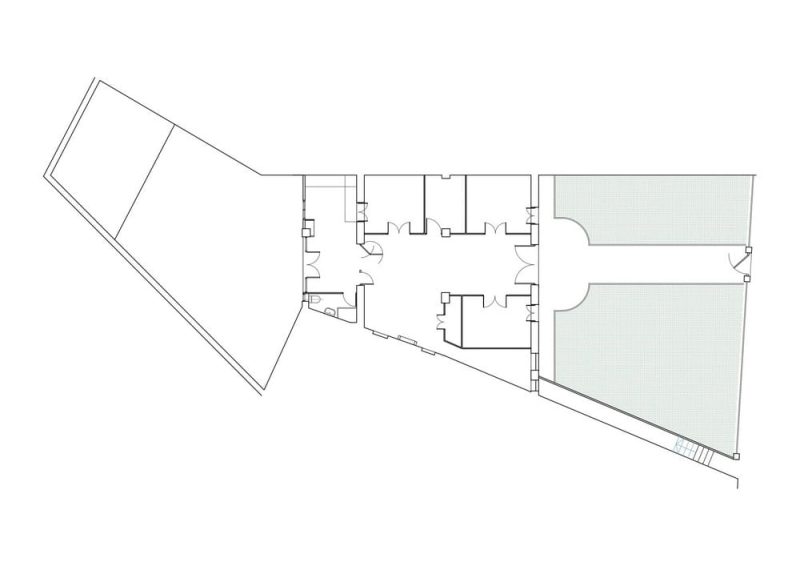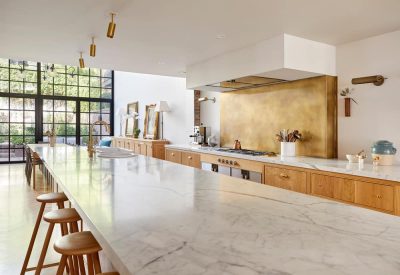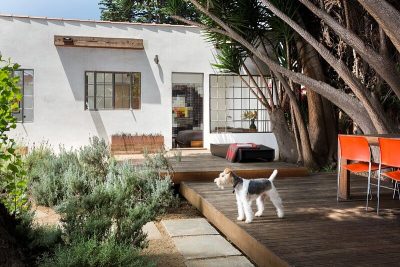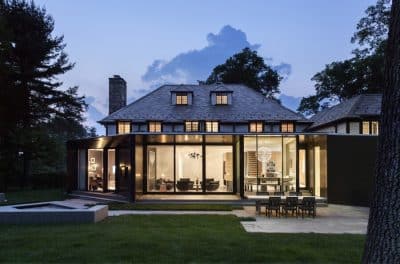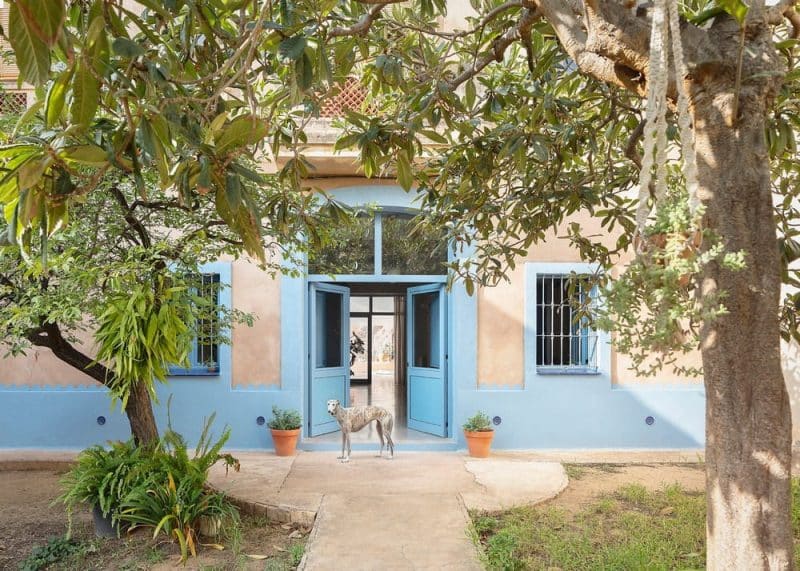
Project: Casa Patio
Architecture: Piano Piano Studio
Team: Maria Grifo Antón, Maria Donnini
Location: Valencia, Spain
Year: 2023
Photo Credits: Milena Villalba
Hidden behind two courtyards, Casa Patio by Piano Piano Studio is a sensitive restoration of a traditional rural house in l’Horta, Spain. Set back from the street, the two-storey home greets visitors with a façade marked by its signature blue tone and a garden shaded by two fruit trees. This project brings new life to a modest dwelling, balancing respect for the past with the simplicity of contemporary design.
Reinterpreting Rural Heritage
The original house followed a typical l’Horta layout: a narrow plan organized along a central axis. It featured thick walls, slender partitions, and generous wooden joinery, but also suffered from rising damp and spatial disconnection. Over time, the vaulted staircase that once linked the floors had been removed, leaving the ground and upper levels disconnected.
Piano Piano Studio began by stabilizing the structure and protecting the building from moisture. The architects preserved the essential character of the home while reworking it for modern life. The clients had ambitious dreams but understood the limits of their budget. Therefore, this first phase focused on renovating the ground floor and rebuilding the link to the upper level, leaving the large rear courtyard for a later stage.
Geometry and Spatial Balance
At the heart of Casa Patio, two new volumes organize the interior. One contains the bathroom, and the other defines the kitchen area. Their geometry follows the diagonals and sight lines of the original plan, preserving its central axis and imperfect symmetry. The layout feels calm yet dynamic, maintaining the rural home’s charm while improving its logic.
A new staircase restores vertical connection. Built with a vaulted ceiling reminiscent of the original, it runs along the façade and the party wall. The design feels sculptural but light, allowing air and light to move freely. Around it, four semi-open areas remain flexible for future use — adaptable corners defined by curtains or partitions that can evolve over time.
Color, Texture, and Continuity
Material and color play central roles in Casa Patio by Piano Piano Studio. The architects stripped old paint from beams and joists, revealing natural textures and traces of the home’s history. On the walls, careful cleaning exposed soft plaster tones and subtle painted borders, keeping a connection with the building’s original craftsmanship.
Vibrant color defines the new intervention. The two inserted volumes are painted in contrasting hues — one in warm ochre and the other in bright blue. The floor, made of coarse exposed concrete, extends throughout the house to unify the spaces. Small ceramic fragments, in the same colors as the walls, are embedded in the floor. They highlight transitions to the courtyards and reinforce the geometry of the plan while adding playful touches of light and color.
A Dialogue Between Indoors and Outdoors
The home’s relationship with its surroundings has also been carefully reconsidered. At the front, a new door provides flexible access. It can open fully to the patio or partially for ventilation and conversation. The design even allows air to flow while keeping the family dogs safely inside — a small but clever gesture that adds daily comfort.
At the opposite end, the restored porch reconnects directly to the kitchen and interior spaces. A small serving window in the façade strengthens this link, making it easy to share meals and conversation between inside and out. The porch becomes a favorite spot on mild winter afternoons, where the low sun fills the space with warmth.
A Contemporary Soul in a Historic Shell
With its clear geometry, refined colors, and subtle craftsmanship, Casa Patio by Piano Piano Studio offers a modern interpretation of traditional rural living. The house feels both grounded and open, practical yet poetic. Between its courtyards and colored walls, it stands as a serene reminder that renewal does not mean replacement — it means listening carefully to what already exists.
